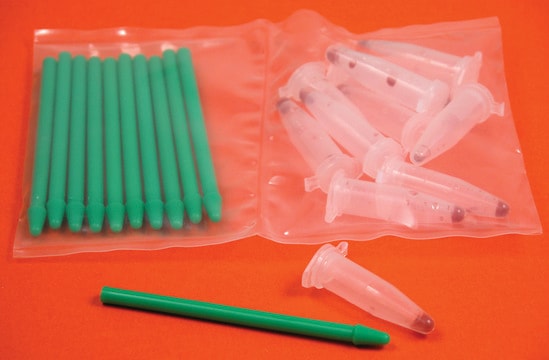D8938
KIMBLE Dounce Gewebehomogenisator
2 mL complete
Synonym(e):
885300-0002, Dounce, Dounce Homogenizer, Glass Tissue Grinder, KIMBLE Tissue Grinder, KONTES, Pestles, Tissue Grinder, Tubes
About This Item
Empfohlene Produkte
Materialien
glass
Leistungsmerkmale
autoclavable
Hersteller/Markenname
Kimble® 885300-0002
Abstand Stößel A
0.0030-0.0050 in.
Abstand Stößel B
0.0005-0.0025 in.
Arbeitsvolumen × L
2 mL × 60 mm
Suchen Sie nach ähnlichen Produkten? Aufrufen Leitfaden zum Produktvergleich
Allgemeine Beschreibung
Leistungsmerkmale und Vorteile
Rechtliche Hinweise
Analysenzertifikate (COA)
Suchen Sie nach Analysenzertifikate (COA), indem Sie die Lot-/Chargennummer des Produkts eingeben. Lot- und Chargennummern sind auf dem Produktetikett hinter den Wörtern ‘Lot’ oder ‘Batch’ (Lot oder Charge) zu finden.
Besitzen Sie dieses Produkt bereits?
In der Dokumentenbibliothek finden Sie die Dokumentation zu den Produkten, die Sie kürzlich erworben haben.
Kunden haben sich ebenfalls angesehen
Unser Team von Wissenschaftlern verfügt über Erfahrung in allen Forschungsbereichen einschließlich Life Science, Materialwissenschaften, chemischer Synthese, Chromatographie, Analytik und vielen mehr..
Setzen Sie sich mit dem technischen Dienst in Verbindung.










